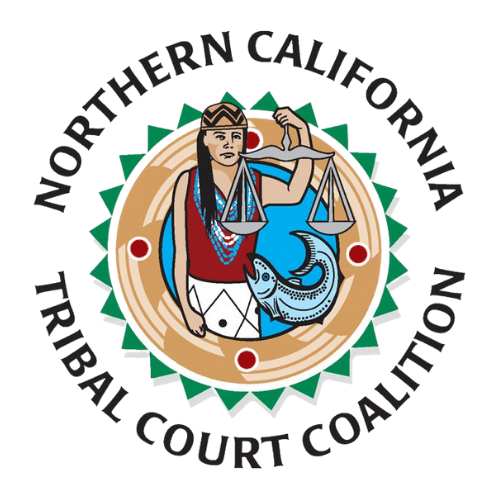Native Youth Toolkit on Human Trafficking
In 2017, the Administration for Native Americans (ANA) and the Office on Trafficking in Persons within the U.S. Department of Health and Human Services (DHHS) published the Native Youth Toolkit on Human Trafficking. The Toolkit may be downloaded from https://www.acf.hhs.gov/ana/training-technical-assistance/native-youth-toolkit-human-trafficking.
The purpose of this toolkit is to raise awareness and prevent trafficking of Native youth by educating them on what human trafficking is, available resources, safety tips, and ways to get involved in their communities. The toolkit is available as a PDF document.
The Toolkit (page 2) explains the difference between the legal definitions of Sex Trafficking and Labor Trafficking.
Sex Trafficking occurs when an adult is compelled to engage in commercial sex by force, fraud, or coercion or any time in which a minor is engaged in commercial sex. Commercial sex is when a sex act is exchanged for something of value, which does not have to be money.
Labor Trafficking involves children and adults compelled to perform labor or services by force, fraud, or coercion. Employers use physical or psychological control, such as physical abuse, demanding laborer to repay a loan, threatening to hurt family and friends, and/or taking away identification documents or money so that victims believe they have no choice but to continue working for that employer.
The Toolkit provides information about how human trafficking has occurred in tribal communities, who traffickers may be, who they target, and how they coerce their victims into trafficking.
The data shared by the Toolkit (page 6) says that anyone may become the target of sex or labor traffickers, even in tribal communities.
One hundred sixteen (116) potential cases of human trafficking reported involved American Indians and Alaska Natives. (National Human Trafficking Hotline, January 1, 2011-March 31, 2017).
Thirty-seven percent ( 37%) of sex trafficking cases involving American Indians and Alaska Natives referenced minor victims. (National Human Trafficking Hotline, January 1, 2011-March 31, 2017).
More importantly, the Toolkit (page 7) provides strategies for preventing or combatting human trafficking in tribal communities including:
1) Talk to your tribal leaders about human trafficking. Make them aware of the issue and how it impacts your community. Some tribes have recently passed their own laws; you can help yours do the same.
2) Start a school coalition to end human trafficking. Create a safe space for conversation and educate your classmates on the ways to protect each other.
3) Hang posters in your community. Make information on the National Human Trafficking Hotline and human trafficking available in your community. You can start with the poster included in this toolkit.
4) Use social media to speak out against human trafficking. Complete and post the sign “I stand against human trafficking by_______” in this toolkit. Use #endtrafficking and #lookbeneaththesurface to add your voice to the conversation.
5) Strengthen your community. Find useful ways to serve and contribute to your community. Work with kids that are younger than you, show them that they are valued, and provide them with a safe place to learn and grow.
6) Spread awareness and support survivors. You can do this through fundraising events, such as a movie screening featuring a film focused on human trafficking with a discussion afterward.
To report suspected human trafficking, find services or to learn about more options, call the National Human Trafficking Hotline is 1-888-373-7888 or visit their website at www.HumanTraffickingHotline.org. (See page 9 of the Toolkit.)
The Toolkit (pages 4 and 8) also provides links to important online resources and social media networks.
Learn more here:
- https://humantraffickinghotline.org/
- https://www.acf.hhs.gov/endtrafficking
- https://ovc.ncjrs.gov/humantrafficking/
- https://www.dhs.gov/blue-campaign
- http://nationalsafeplace.org/
- https://www.niwrc.org/
- Published in Uncategorized
Considerations when obtaining and enforcing restraining orders
Restraining Orders in Tribal and State jurisdictions
A victim of violence may apply for a restraining order from the court having jurisdiction over the place where the violence occurred or where the perpetrator of the violence lives. If the perpetrator of the violence lives on Tribal lands, the victim of the violence may apply for a restraining order from the Tribal court (if available) or the State court for the county where the violence occurred. Not all Tribes have their own Tribal court or law enforcement agency. If that is the case, the victim of violence may apply for a restraining order in the State court serving their County. Once a restraining order is obtained in either jurisdiction, the victim may choose to register the restraining order with the other jurisdiction, particularly if the victim works or visits the jurisdiction often.
In the past, registration of a restraining order in the other jurisdiction was required to obtain enforcement within that jurisdiction. Today, federal and state laws no longer require registration; however, law enforcement agencies may require that the restraining order is in one of several law enforcement databases, such as California Restraining and Protection Orders System (CARPOS) or the California Law Enforcement Telecommunication System (CLETS).
How does a Victim obtain a Tribal restraining order?
When violence occurs on Tribal lands in California, the victim(s) of the violence may obtain a restraining order from the Tribal court or they may go to a State court for that county. Among Tribal courts that issue their own restraining orders are the Hoopa Valley Tribal court, Karuk Tribal court, Tolowa Dee-ni’ Nation Court, Trinidad Rancheria Tribal court and Yurok Tribal court issue their own protection orders. Visit the Tribal court or its website to obtain forms and directions on how to apply for a Tribal court protection order.
Under PL 280, both the Tribal court and the State court may exercise jurisdiction over the matter. If a Tribe does not have a court or does not issue protective orders, the victim(s) should go to a State court. To determine from which court to request a restraining order, consider the safety of the victim, location of the perpetrator of violence, and proximity to the law enforcement agency that will enforce the restraining order. See the Resources section to determine the courts that may serve your area.
Pursuant to the federal Violence Against Women Act (VAWA) and California law, a Tribal court protection order must be given full faith and credit (See 18 U.S.C. § 2265; and California’s Uniform Interstate Enforcement of Domestic Violence Protection Orders Act, Fam. Code, §§ 6400–6409)).
Under these laws, a protective order issued by a Tribal or sister-State court is entitled to full faith and credit and enforcement and does not need to be registered in California. However, many law enforcement agencies and officers will not enforce a protection order unless it is viewed in the California Restraining and Protection Orders System (CARPOS) through the California Law Enforcement Telecommunication System (CLETS). Contact the local law enforcement agency to determine their local practice for enforcing Tribal court protection orders.
Some Tribal courts that issue Tribal court Protective Orders: Hoopa Valley Tribe, Karuk Tribe, Tolowa Dee-ni’ Nation, Trinidad Rancheria and Yurok Tribe.
What happens after the Tribal Judge issues the restraining order?
1. Within 1-24 hours of issuance of a Tribal Protection Order (TPO), the Court Clerk enters the order into the DOJ Tribal Access Program (TAP) kiosk. The system downloads the TPO into the federal National Crime Information Center (NCIC) database and returns a NCIC entry number.
2. The clerk adds the NCIC entry number and date under the clerk’s seal at the end of the TPO.
3. Local law enforcement have access to TAP and NCIC and CLETS (California Law Enforcement Telecommunications System) in their car terminals, and check all. If they are not in their cars, dispatch (911) or calling officer has access.
4. If the victim(s) has a copy of the restraining order in hand, law enforcement must enforce. The petitioner must have proof of service showing that the restraining order was served on the perpetrator of the violence. If there is no proof of service, the petitioner will not get an order after hearing and the TRO (temporary restraining order) will disappear unless renewed by the court.
For Victims: Enforcing your Tribal restraining order
When you obtain the restraining order, make several copies. Keep a copy of the restraining order with you at all times and in locations where you spend significant time such as at home and at work. Give a copy to anyone else listed in the restraining order. Make sure your Tribal and local police departments get a copy of your restraining order. Although, you are not required to register a Tribal court issued protection order with the State court or law enforcement, it is a good practice to make sure that the law enforcement agency is aware of the protection order. Give copies of the restraining order to friends, neighbors or family members that are willing to help you. If the abuser violates the terms of the restraining order, call the police. Document any actions or statements made by the perpetrator of the violence. Keep copies of any threats, messages, or emails. Have a plan to stay safe in case the police cannot arrive immediately.
Obtaining a restraining order can be confusing or a slow process. If you are in danger, focus on staying safe. Always check for restraining order application forms online at your Tribal court website, on the NCTCC website, or on the Judicial Council of California (http://www.courts.ca.gov). Check with your local county court for their required forms. Work with a domestic violence advocate to obtain all the necessary information to complete and submit the forms to the court(s) having jurisdiction.
Resources
Learn more at www.courts.ca.gov/documents/tribal_bulletin-court-protection-orders.pdf
- Published in Uncategorized
Where to Report Crime While Living In Indian Country: Navigating the PL-280 Multi-Jurisdictional Maze.
Facing a road of obstacles to overcome the aftermath of surviving a crime can feel overwhelming. The amount of physical, psychological, spiritual, financial, and legal efforts needed to restore one’s life is challenging enough. Yet, due to PL-280, those living in Indian Country may encounter extra barriers in order to receive basic services such as reporting a crime or filing a tribal restraining order. Victims of crime should be walking on the road towards healing. How can we help victims of crime who live in Indian Country navigate a jurisdictional maze? How did we get here and how does one navigate it?
Where does this maze begin?
The General Crimes Act (1817) and the Major Crimes Act (1885) set the stage for jurisdictional confusion in Indian Country. These Acts made it possible for the federal government’s ability to impose concurrent jurisdiction between federal and tribal governments.
The General Crimes Act was enacted by Congress in 1817. This Act created federal court jurisdiction over: 1) some federal crimes committed by Indian offenders against non-Indian victims; and 2) all crimes against Indian victims by non-Indian offenders.
The Major Crimes Act was enacted by Congress in 1885 to grant federal jurisdiction over 7 named crimes in Indian Country: murder, manslaughter, rape, assault with intent to kill, arson, burglary, and larceny. Now more than 42 crimes are included in the subsections referenced in the Major Crimes Act.
Sharing concurrent jurisdiction between two governing bodies was challenging enough. However, in 1953 Congress brought state jurisdiction into Indian Country as well. Public Law 280 (PL 280) is a Termination Era law that was enacted by Congress in 1953. PL 280 is a federal statute that passed criminal jurisdiction over Indian Country to the following states:
California……All Indian country within the State
Minnesota….All Indian country within the State, except the Red Lake Reservation
Nebraska…..All Indian country within the State
Oregon……..All Indian country within the State, except the Warm Springs Reservation
Wisconsin…All Indian country within the State, except the Menominee Reservation
Pursuant to PL 280, the Major Crimes Act and the General Crimes Act are no longer applied to Indian Country in PL 280 states. Consequently, state criminal laws and jurisdiction apply to criminal activity in Tribal communities. Although PL 280 transfers this federal responsibility to states, Tribes continue to have Tribal criminal jurisdiction over Indians and non-Indians that commit crimes defined by VAWA.
Pursuant to PL 280, Indian and non-Indian parties involved in a civil dispute may take their case to Tribal Court or state court. PL 280’s civil provisions allow for a state court judge to hear a civil dispute that arises in Indian Country and to apply Tribal law to that civil dispute, if Tribal law does not conflict with state law.
What does this mean for victims of crime?
The jurisdictional responsibility over a violent crime occurring on Tribal lands depends on the type of crime that occurs, the Indian status of both perpetrator and crime victim, and applicable Tribal laws. If a Tribe has adopted criminal laws and has a criminal justice system, the Tribe can bring charges against a perpetrator of a violent crime in their own Court system.
An Emergency Protective Order (EPO) or Restraining Order granted by a Tribal government should be honored by county and state governments and law enforcement officers. However, because of the complex nature of multi jurisdictional issues, some peace officers may not recognize the official order provided by a Tribal Court. This can cause hardship for a victim of crime who may be seeking the protection of law enforcement to uphold the EPO if they find the perpetrator violating the order.
Considerations for filing the complaint may include where the crime was committed, location of the nearest court, and the Tribal membership status of the perpetrator and the survivor. A victim of crime should discuss with their attorney if there are pros and cons associated with filing their complaint in Tribal or state jurisdiction.
Survivors of crime do have resources available to them to aid their decision making process. For support contact a victim advocate, Tribal Court, or local law enforcement agency. NCTCC provides a self-help Mobile Application tool containing an exhaustive list of victim resources. You can also refer to the “Criminal Justice System Explained” section of the NCTCC Mobile Application for help with determining where to report a crime.
To learn more download the NCTCC Mobile Application.
Android https://play.google.com/store/apps/details?id=com.shufflelabs.nctcc
- Published in App Posts
NCTCC ANNOUNCES NEW LEADERSHIP
PRESS RELEASE
CONTACT: Cynthia Boshell
COMPANY: Northern California Tribal Court Coalition
PHONE: (707) 601-6954
EMAIL: cboshell@nctcc.org
ADDRESS: 728 Fourth Street Box M, Eureka, CA 95501
WEB: https://nctcc.org/
DATE: March 31, 2021
NCTCC ANNOUNCES NEW LEADERSHIP
Cynthia Boshell named Executive Director
(Eureka CA 03/24/2021)-The Honorable Abby Abinanti, Chief Judge of the Yurok Tribal
Court and Chairperson of Northern California Tribal Court Coalition (NCTCC), announced
that as of January 1, 2021 NCTCC, whose main office is in Eureka, CA, has a new
Executive Director. Cynthia Boshell, who began working with the organization in 2015 will
now serve in the Executive Director position.
Ms. Boshell has interests in Tribal food security, Tribal justice systems, Tribal sovereignty,
and has experience in non-profit business governance. Ms. Boshell earned her certificate
in Sustainable Energy and Resources Law and Native American Law from the University
of Tulsa College of Law where she was awarded her Juris Doctorate (2015). Boshell is
also a graduate (2011) of, and former instructor in Humboldt State University’s Native
American Studies Program.
NCTCC is a non-profit coalition of six northern California Tribal courts whose judges came
together in 2004 for the purpose of working together to promote and strengthen Tribal
justice systems to restore balance and order in our communities, while honoring
sovereignty and cultural values.
NCTCC’s programs include Tribal appellate courts, self-help legal resources, domestic
violence, child welfare advocacy, and the Rights of Mother Earth program which supports
initiatives that strengthen traditional Tribal responsibilities toward the Earth.
Please contact NCTCC Executive Cynthia Boshell cboshell@nctcc.org or (707) 601-6954
with any questions.
FOR IMMEDIATE MEDIA RELEASE – March 31, 2021
- Published in Uncategorized



